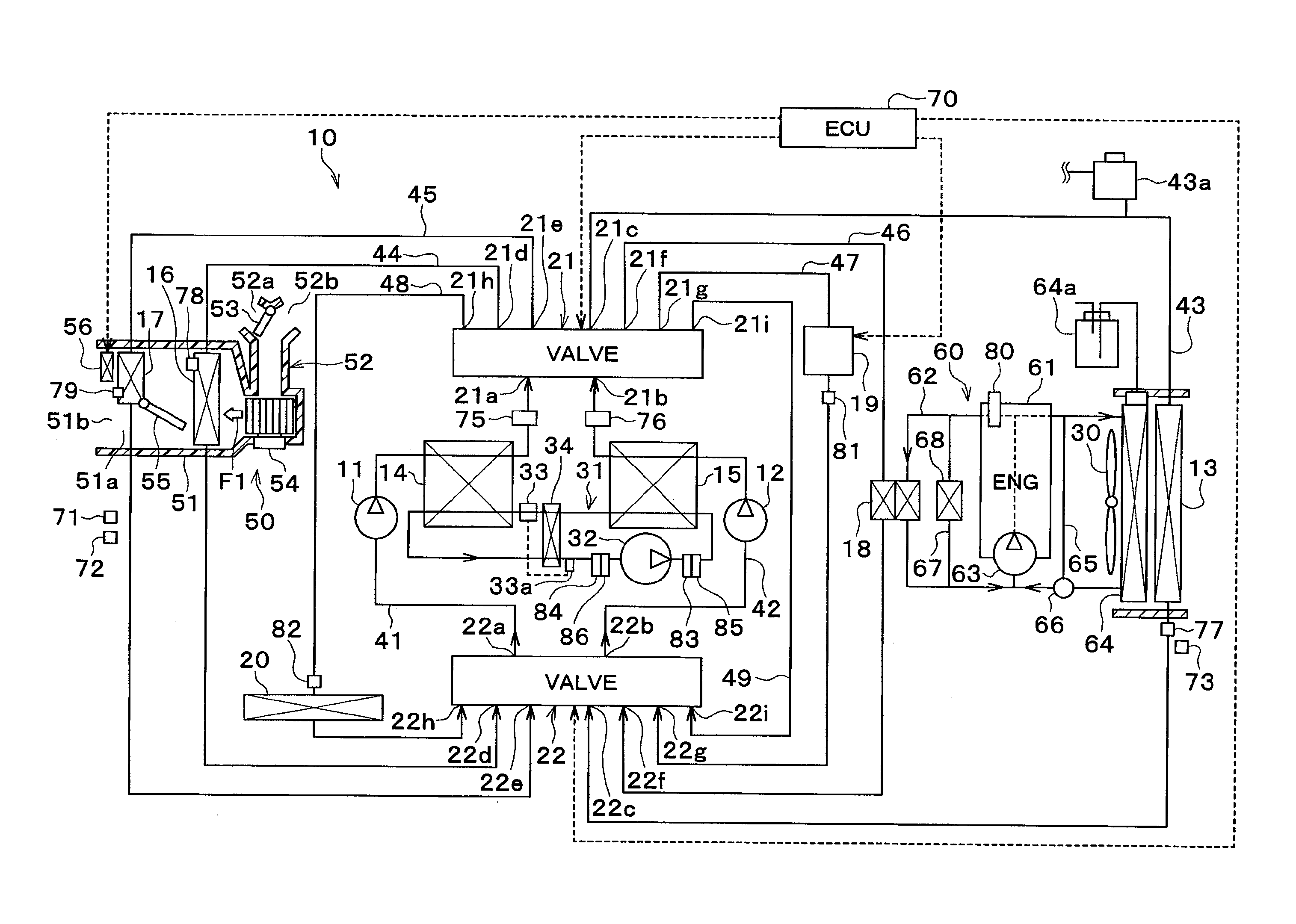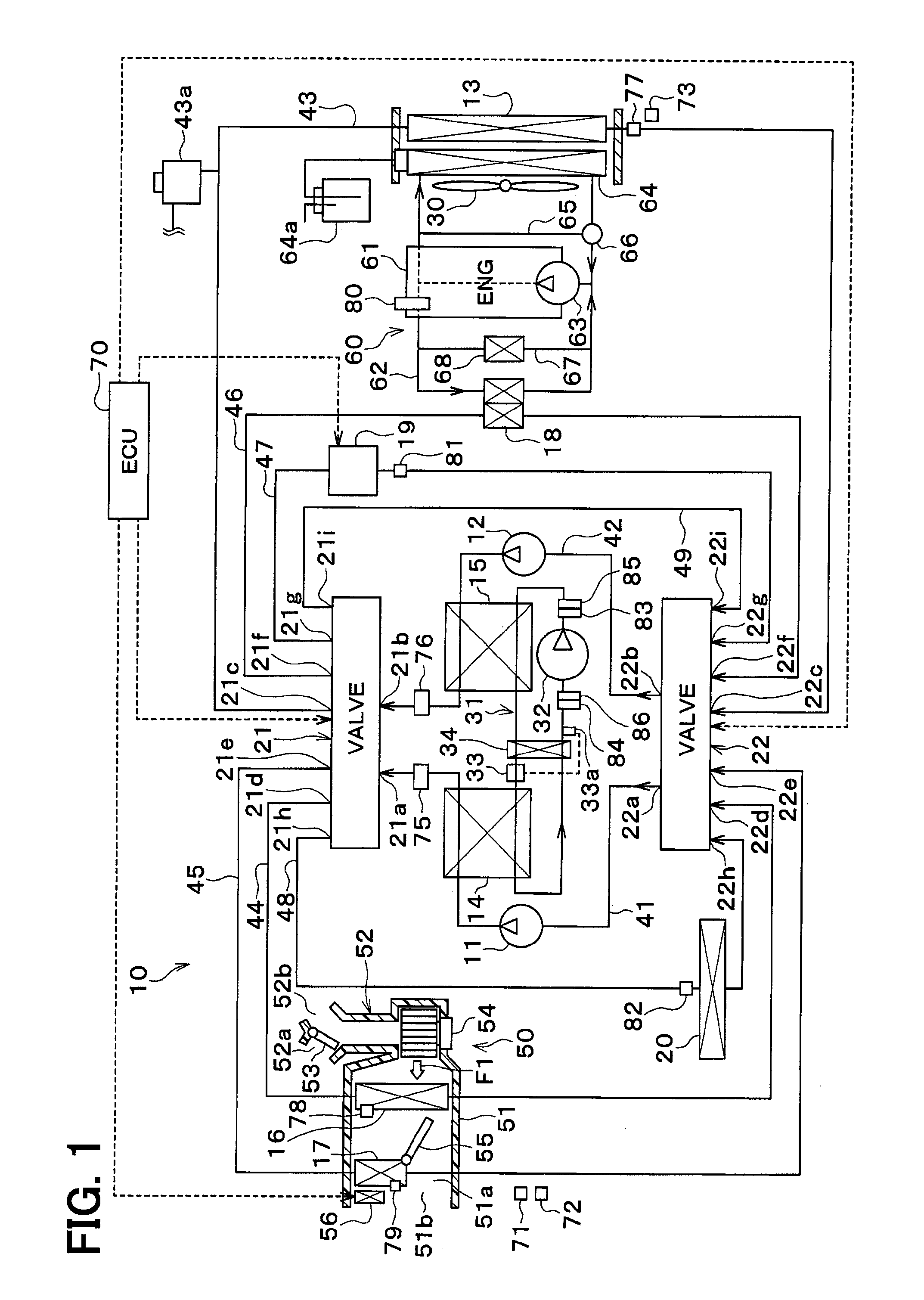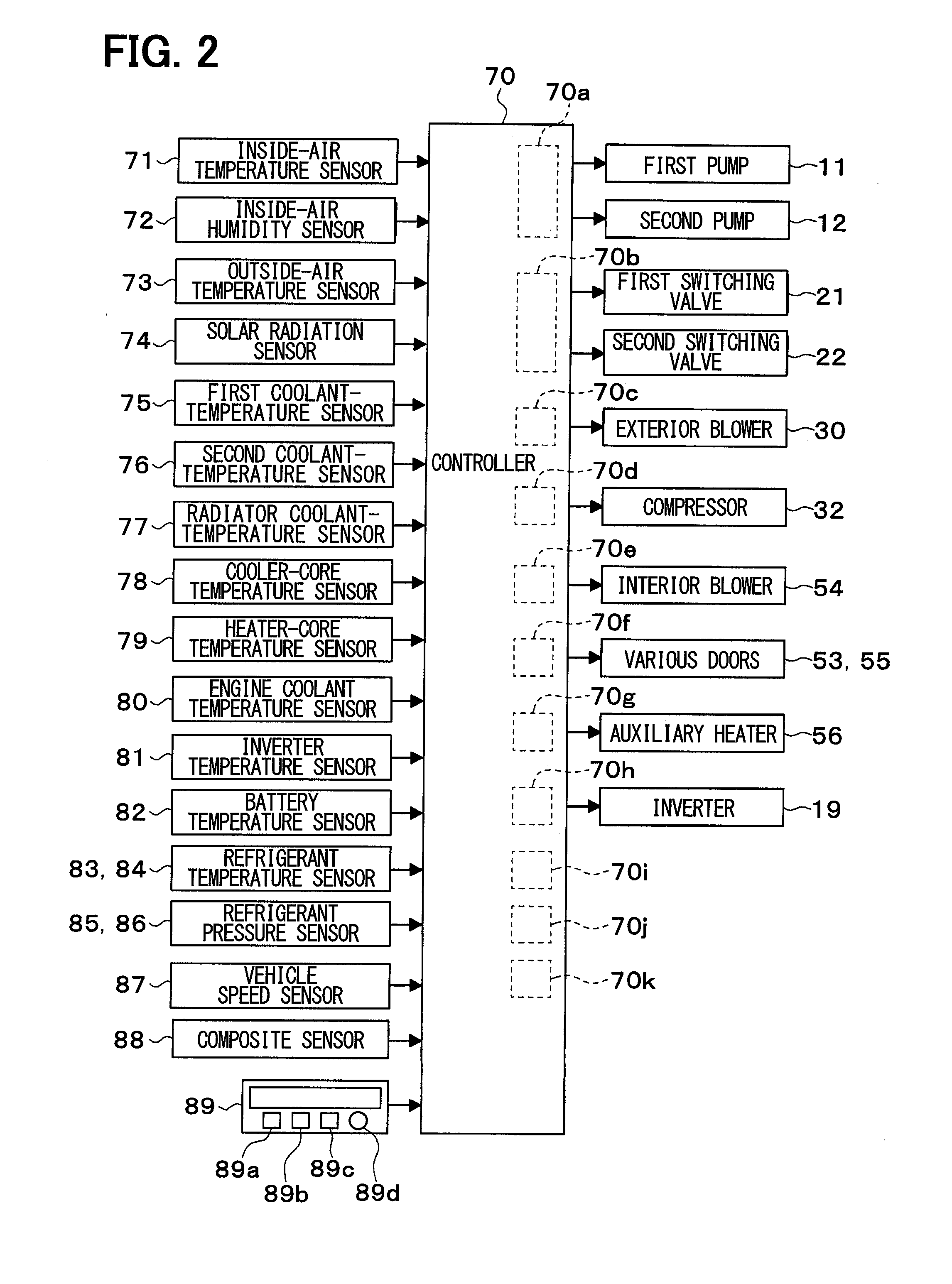Air conditioner for vehicle
a technology for air conditioners and vehicles, applied in the field of air conditioners, can solve the problems of limited power saving, and achieve the effect of reducing the power required to suppress fog on the window glass
- Summary
- Abstract
- Description
- Claims
- Application Information
AI Technical Summary
Benefits of technology
Problems solved by technology
Method used
Image
Examples
first embodiment
[0033]A thermal management system 10 for a vehicle shown in FIG. 1 is used to adjust various devices mounted on a vehicle or an interior of the vehicle to an appropriate temperature. In this embodiment, the vehicle thermal management system 10 is applied to a hybrid vehicle that can obtain the driving force for traveling of a vehicle from both an engine (internal combustion engine) and an electric motor for traveling (motor generator).
[0034]The hybrid car of this embodiment is configured as a plug-in hybrid car that can charge the battery (vehicle-mounted battery) mounted on the vehicle, with power supplied from an external power source (commercial power source) during stopping of the vehicle. For example, a lithium ion battery can be used as the battery.
[0035]The driving force output from the engine is used not only as a driving force for traveling of the vehicle, but also as a force for operating a generator. Power generated by the generator and power supplied from an external pow...
second embodiment
[0295]In this embodiment, as shown in FIG. 7, steps S181 and S184 in the flowchart of FIG. 6 of the first embodiment are changed to steps S181′ and S184′.
[0296]In step S181′, it is determined whether the temperature of the outside air increases or not. When the outside-air temperature is determined not to increase, the operation proceeds to step S182, whereas when the outside-air temperature is determined to increase, the operation proceeds to step S183.
[0297]In step S184′, it is determined whether the surface temperature TC of the cooler core 16 exceeds the target temperature TCO or not. When the surface temperature TC of the cooler core 16 is determined to exceed the target temperature TCO, it is determined that the window fogging cannot be prevented in the compressor-off mode. Then, the operation proceeds to step S185, in which the thermal management system is transferred to the compressor-on mode.
[0298]As mentioned above, in this embodiment, in the compressor-off mode (second de...
third embodiment
[0304]Although in the first embodiment, the thermal management system can be switched between a state of connection of the radiator 13 to the low-temperature side coolant circuit and a state of connection thereof to the high-temperature side coolant circuit, in this embodiment, the radiator 13 is constantly connected to the low-temperature side coolant circuit as shown in FIG. 8.
[0305]The refrigeration cycle 31 is provided with a condenser 15A that condenses a high-pressure side refrigerant by exchanging heat between the high-pressure side refrigerant discharged from the compressor 32 and the outside air.
[0306]Although not shown, the heater core 17 is adapted to allow the coolant (engine coolant) for the engine cooling circuit 60 to circulate through the heater core 17. The heater core 17 may allow for circulate of hot water (heat medium) heated with the high-pressure side refrigerant in the refrigeration cycle 31 therethrough. An electric heater (for example, a PTC heater) may be d...
PUM
 Login to View More
Login to View More Abstract
Description
Claims
Application Information
 Login to View More
Login to View More - R&D
- Intellectual Property
- Life Sciences
- Materials
- Tech Scout
- Unparalleled Data Quality
- Higher Quality Content
- 60% Fewer Hallucinations
Browse by: Latest US Patents, China's latest patents, Technical Efficacy Thesaurus, Application Domain, Technology Topic, Popular Technical Reports.
© 2025 PatSnap. All rights reserved.Legal|Privacy policy|Modern Slavery Act Transparency Statement|Sitemap|About US| Contact US: help@patsnap.com



